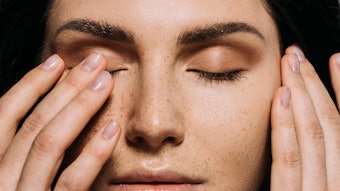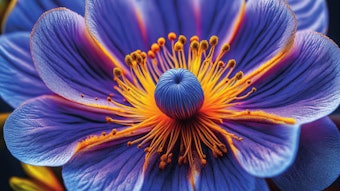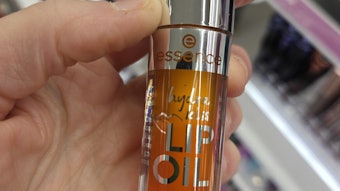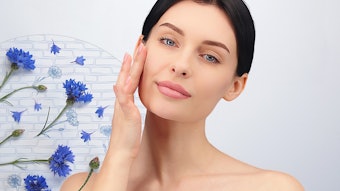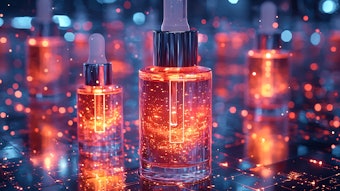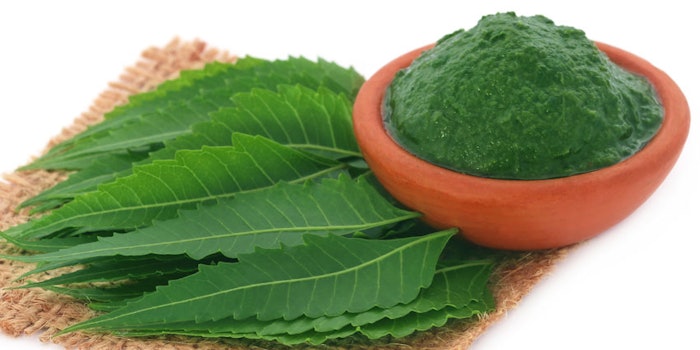
According to market researchers, consumers worldwide are going green, and this is especially true in the cosmetics market. In recent years, growth in the beauty market has been driven by products that use natural or herbal components—and the market share of these natural-based products has been increasing gradually.
Companies are feeling pressured to focus on sustainability and reduce their environmental footprint, while consumers are more aware and better informed about the ingredients going into the products they use. On the supply side, companies are engaging in advanced research on plant-derived peptides, encapsulated actives, active plant stem cells, complex extraction processes and clinical testing to deliver products acceptable to these well-informed customers.
During the last decade, the herbal beauty care business has emerged as a new growth frontier in India and the emphasis has been on the growth of the herbal and ayurvedic beauty products business. Today’s Indian cosmetics industry showcases a number of herbal cosmetic brands like Forest Essentials, Biotique, Himalaya, Blossom Kochhar, VLCC, Dabur and Lotus. And in addition to a widening consumer base, color cosmetics and anti-aging creams are expected to be the future drivers of growth in this segment.
Ayurvedic cosmetic manufacturers are investing in research to develop better and more effective cosmetics, but at the end of the day, these products still compete with traditional and synthetic products. Companies therefore must strive to ensure the quality of ayurvedic cosmetics matches synthetic brands.
Above quality, however, ayurvedic cosmetics are rooted in ancient tradition. And to remain genuine to this tradition, one must understand their foundation and the synergy between ayurveda and cosmetics. The present article reveals these connections and provides theories for formulating in this future market; part two in this series will discuss ingredients and practical application. (see Part II)
Ancient Traditions
The word cosmetic is derived from the Greek word kosmeticos and means skill in decorating, arranging or correcting deformities. It is therefore no coincidence that cosmetics are applied topically to the skin and its appendages to cleanse, decorate, beautify, alter the appearance of, and ultimately enhance the confidence of the user.
Ayurveda is the oldest and most holistic health system available to human beings today. While it is considered one of the ancient sciences of health and medicine, it includes cosmetic aspects as well. This ancient wisdom of healing, prevention and longevity was a part of the spiritual tradition of a universal religion before it was written down in texts. In ayurveda, beauty is more than skin deep—it is the most obvious external manifestation of overall well-being and a mirror to physical, mental and spiritual wellness.
Ayurveda’s connections between one’s inherent traits in relation to skin care are described later in this article. Fundamentally, ayurveda aligns with the Vedas, i.e., the main scriptural texts of Sanatana Dharma or Hinduism. The Vedas are regarded as Sruti, or “that which is heard,” and form part of an ancient teacher-disciple tradition. The four main Vedas are: Rig, Sama, Yajur and Atharva. As per Hindu culture, these Vedas were “revealed” to Rishis, i.e. seers or sages, through intense meditation. Around 6000 years ago, one of the greatest sages of India, Vyasadeva, wrote down the Vedas for the first time. They may arguably be the world’s oldest surviving texts.
Regarding the use of ancient cosmetic ingredients and products, their use is believed to have originated in India. References are made to cosmetics such as tilak, kajal, kumkum, alita and agaru in the play titled “Abhijnana Shakuntalam,” the poem “Meghadootam of Kalidasa” and other mythological epics. Also enscripted in the Aryan Period (approx. 1500-100 B.C.) is the use of turmeric or haridra, saffron, alkanet, agaru, chlorophyll from nettle plants, indigo, red sandalwood or rakta chandan and chandan for beautification.
Interestingly, ideas of self-beautification were practiced by both men and women in ancient India. In fact, famous depictions in the Ajanta and Ellora Caves, and the Khajurao Group of Monuments showed not only women, but also men adorned themselves with jewelry, scents and cosmetics.
The earliest records of products and their application date back to ca. 2500 and 1550 B.C., to the Indus Valley civilization. In this context, the earliest reference to a beautician is in the epic poem “Mahabharata.” Draupadi, the wife of the five Pandavas sons in exile, worked for the queen of Virāta, a Northern district of India. She called herself Sairandhri, i.e. a female attendant in the women’s sections of the palace. This poem refers to her carrying a Prasādhana Petikā, or a vanity case containing substances to beautify, accessories to decorate and toiletries.
Many cosmetic practices were subtly interwoven with the seasons (Sanskrit: Rutus) and the normal rituals of life (Sanskrit: Dinacharyā). The use of these products was directed not only toward developing an outwardly pleasant and attractive personality, but also and more importantly, toward achieving merit (Sanskrit: Punya), longevity with good health (Sanskrit: Aayush and Aarogyam) and happiness (Sanskrit: Anandam).
Different Lepās, i.e., masks or applications, were recommended for different seasons of body beautification and the ingredients used during cold seasons were quite different from those used in warm seasons. In fact, the 1500-year-old book of ayurveda, Ashtānga Hridaya, offers six different formulas to be used during the six seasons of the year—winter, spring, summer, monsoon, autumn and late autumn.
Similarly, special ayurvedic tailams (oils) and ghritas (clarified butter or ghee) were used for facial beautification. Special ingredients were used for hair washes and henna or mehendi was used for conditioning and dyeing hair. Remedies were indicated for hair growth, loss prevention and premature graying as well. Fragrant bath powders, body deodorants and hair rinses also find frequent mention.
Skin Health According to Ayurveda
Skin has special status in ayurveda since, as described above, it is “an upadhatu of the raktadhatu”—i.e., a mirror that reflects the quality of the body’s blood (Sanscrit: Raktadhatu) and plasma tissue (Sanscrit: Rasadhatu). Hence, it is a common saying, “glowing skin is the result of good quality Rasa and Rakta.” According to ayurvedic belief, all individuals are beautiful creations of nature. There is no “ugly” and the judgment of grades in beauty lies in the viewer’s perspective.
However, one looks beautiful and radiant only when his or her inner beauty surfaces. This inner beauty is gained through yoga, meditation and the use of natural beauty enhancers. Further, beauty is the harmony of the whole body, including the mind and soul. And where there is harmony, there is health; but where there is no harmony, there is disease. Thus, ayurveda benefits the skin, hair and body.
Ayurvedic Medicine as Cosmetics
The Indian market has traditionally been inclined toward natural beauty products. And Indian people have a long history and knowledge of the safety and use of these natural products. So while consumers in other parts of the world may require education about the benefits of natural herbs, this knowledge was inherited through generations in India. Therefore, the main focus in India would be more on translating ancient ayurvedic recipes into modern formats with superior quality.
Plant extracts and other natural substances have been formulated into cosmetic products according to ayurvedic tradition not only for the daily care of skin and hair, but also for the treatment of conditions. One of their major benefits is biologically active ingredients, which are easily absorbed into deeper layers of the skin and can influence it at cellular level. Today, many bio-engineered actives are also available and were proven effective.
Take sesame oil, for example, which is used as a base in many ayurvedic oils. It contains the lignin compounds sesamin and sesamolin, which are biologically active. These compounds not only enhance the oxidative stability of the oil, they also impart antioxidant and moisturizing benefits. Turmeric is another, whose active curcumin is effective in bringing a glow to the skin. Shikakai can be used as shampoo as it contains saponins with mild detergency and a neutal pH; similarly, aritha contains saponins.
Doshas and Balance
Also according to ayurveda, each human has an individual constitution, forming a certain set of qualities and characteristics, which do not change throughout life. In modern language, this might translate to traits inherited through the genetic code. Since ancient times, ayurveda has called this individual constitution Prakriti, which is each person’s unique energy pattern—combination of physical, mental and emotional characteristics.
This unique body structure can explain why, for example, some people always need to dress warmly, while others feel great in just a T-shirt. Or, why some people can eat whatever they want and not gain weight, while others must diet or take extreme measures to lose weight. It even relates to the dryness or oiliness of skin and hair and other cosmetic factors. And since ayurveda is the art of healing based on the individual’s whole constitution, it helps for them to live a lifestyle that is most suitable in these terms.
Ancient texts teach the universe is composed of five basic elements: space, ether, fire, water and earth. Combinations of these elements create so-called doshas, or types of energy. The doshas are: Vata (ether and space), Pitta (fire and water) and Kapha (water and earth). We inherit our energy types from our parents, which determine our diversity. The world around us also holds different proportions and combinations these doshas.
The first step toward balance is to determine one’s leading or most dominant dosha, since it tends to “take over” and push the whole body off balance.
Vata dosha (ether and wind): This dosha is the most adaptable to change. People with this type of dominant energy are light, lively and cheerful. They have a great imagination, but their behavior is often unpredictable. They can be tall or short and usually have a thin body structure and dry or chapped skin. They are sensitive to cold and eager to start something new but rarely bring anything to fruition.
Pitta dosha (fire and water): These people are fiery. They tend to rush into politics or business. They want to be first everywhere and in anything. They tend to feel warm or hot and may present with red, inflamed rashes on the skin, acne or cold sores.
Kapha dosha (water and earth): These people are usually burly, unhurried—even slow, steady and confident. They tend to be the most reliable friends. They dislike cold and wet weather and tend to have higher body weights. This dosha is the hardest to budge and least adaptable to change. Illnesses triggered by the lack of this dosha are the most difficult to treat.
Remember, according to ayurveda, the main criterion of a good health is maintaining a balance between all the doshas, which is not an easy thing to do. After all, the surrounding world lives in accordance with the rules of these energies and similar energies tend to power-up each other. Any violation of these rules can harbor problems in the future. Treatment methods are simple: take into consideration that each person has their own nature (Prakriti). One simply needs to define it, then determine the state of their doshas and prescribe a congruent treatment.
Panchakarma for Cleansing and Healing
According to ayurveda, the natural state of humans is a state of health, happiness and inner sense of well-being. Ayurveda and yoga are closely related; one might say they are two sides of the same coin; ayurveda is the healing side of yoga, while yoga is the spiritual side of ayurveda. Together, they create a perfectly balanced body and unity of mind and soul. In fact, for practitioners of Hatha yoga, a slight acquaintance with ayurveda will help to improve their skills and achieve inner harmony and balance.
To achieve this natural state of health, one must be free from toxins, the mind must be balanced, emotions must be calm and positive and all the body’s systems must function normally. In today’s busy, stressful and toxic world, however, the accumulation of stress in both physical and mental life spheres can lead to different health issues. These eventually weaken the body’s organs and systems and spoil health, leading to disease.
Panchakarma is a set of ancient ayurvedic therapeutic procedures that are simple to practice and extremely effective. They free the body tissues from toxins, mainly through purging and cleansing actions; for example, specially formulated douches and enemas. Panchakarma practices open channels and bring life energy, in turn increasing life force and developing the inner spiritual world, giving the individual confidence and a sense of well-being.
Panchakarma also includes topical practices such as abhyanga, or body massage, using large amounts of warm oil, pre-medicated with herbs for specific conditions. Sirodhara is another, in which warm, organic sesame oil is poured onto the forehead in slow movements to imitate sea waves. Similarly, udvartana uses herbal powders in massage. Each of the individually prepared herbal concoctions is designed to deeply penetrate the skin to relax and exfoliate, thus regenerating the skin.
Conclusion: Part I
Now that part one has connected ayurvedic beliefs with aspects of holistic skin care, part two will discuss ingredients and products. Ayurvedic principles can be used in a number of ways—whether as products based on actives of ayurvedic origin, or addressing concerns of given doshas. Ayurvedic ingredients are used to treat acne, pigmentation, premature aging, dark circles, enlarged pores, dandruff and more. Stay tuned as Cosmetics & Toiletries takes ayurvedic principles from theory to practical application, in Part II.
References
- www.bharatbook.com/beauty-personal-care-market-research-reports-342985/india-ayurvedic-cosmetics-market-opportunity-analysis-2018.html
- www.researchandmarkets.com/research/8dmrrv/india_ayurvedic
- KL Bhishagaratna, An English Translation of Sushruta-Samhita (176-340 A.D.)
- AK Panda, Ayursurabhi 2-14 (2005)
- VP Kapoor, Natural Product Radiance, vol 4, 307-14 (Jul/Aug 2007)
- www.hindawi.com/journals/ecam/2011/134378/
- HS Datta and R Paramesh, J Ayurveda Integr 1 110-113 (2010)
